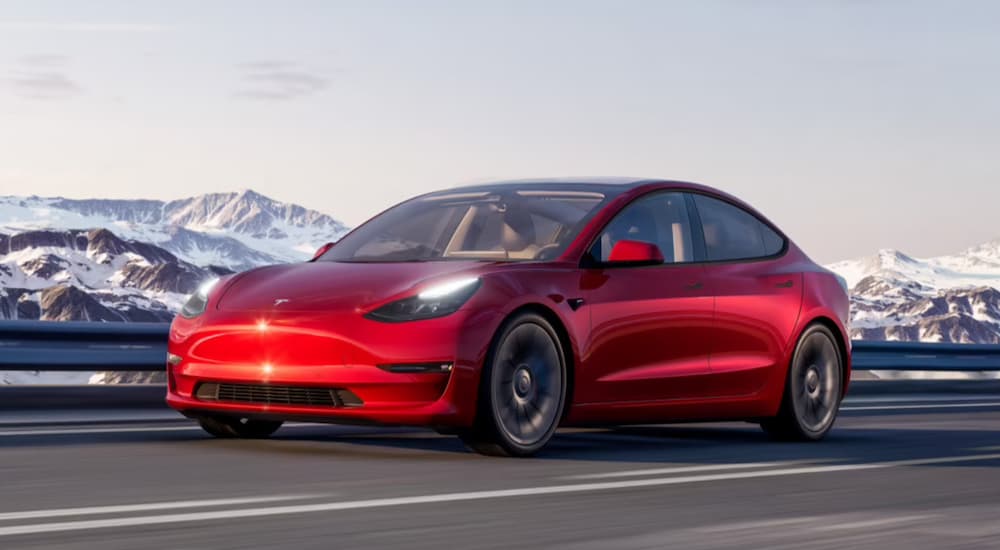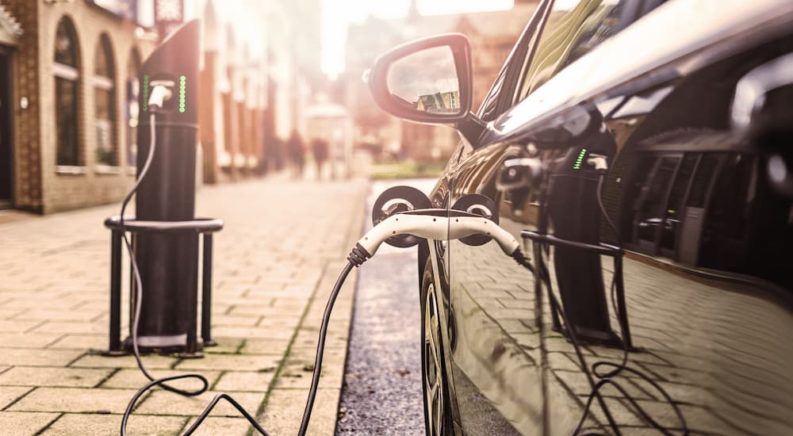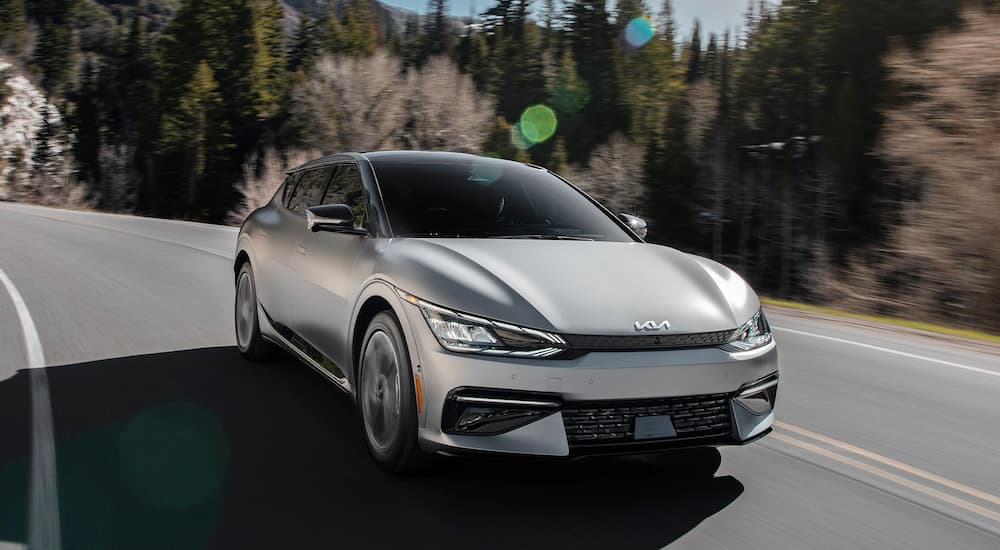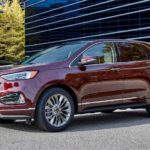While Tesla has established itself as a leader in electric vehicles, the auto industry as a whole has begun to embrace the electric vehicle in a way few would have predicted a decade or two ago. In the past, electric vehicles were seen as overly expensive novelties that were none too pleasant to look at and far too cramped to be enjoyed on long trips, especially if an entire family was being hauled across states. Of course, that supposed the EV had decent range and quick charging, which many did not. In fact, the electric car once appeared so dead that a 2006 documentary by director Chris Paine was titled Who Killed the Electric Car?
Anyone who reads current auto news will know that is a question that no longer needs to be asked. Automobile companies are hopping on the electric car trend with abandon. How did this happen? A potent combination of environmentalism, competition, and government mandates stoked the market, pushing automobile makers like Ford to put electric vehicles back on their lots. In fact, Tesla’s control over the electric vehicle market has gone from 80% to 70% as companies like Ford and Kia aim to ramp up the distribution of electric vehicles.
Current Pitfalls
Computer chip shortages have been the name of the game in the automobile industry for the past few years. It is difficult to read any current auto news magazine or website about an exciting development in the industry without reaching a caveat concerning computer chip shortages. The electric car renaissance is no different, unfortunately. While automakers want to put out more EV models, this chip shortage delays their plans. Toyota, for instance, only has a small share of the EV market, which is partially due to the chip conundrum, but it does plan to grow its EVs to over 30% of sales by 2030.
The computer chip shortage will not last forever, although you could be forgiven for feeling like it will. Experts hope that this problem will wane over 2023 and 2024. If it does, companies like Toyota will be able to aim for their lofty goals. Some may go even further: GM wants to offer only electric vehicles by 2035. Just how successful these goals will be is an open question; consumers will have to check back in a year or two to see how the chip manufacturing industry has recovered.

What Do Electric Vehicles Mean for the Car Connoisseur?
If companies like GM hit their goal of transitioning to electric vehicles, then car aficionados will be living in a very different world. As with any big change, there’s trepidation. Will cars be as enjoyable? As sleek? As varied? In the past, only a handful of electric vehicles have been available, offering consumers limited options and even fewer that appealed to enthusiasts. However, things are quickly changing.
Will future electric vehicles offer the same pleasures of modifications, originality, and desirability? Will car fans still be able to hone their vehicles to their desired image? The answer appears to be a resounding yes. A switch to electric vehicles will not leave car enthusiasts with less exciting options. If anything, there may be more invigorating choices on the market than ever before.
Electric Vehicles Aren’t a Pain Nowadays?
To many consumers, the image of boring, cramped cars still comes to mind when they hear about electric vehicles. Batteries used to take up so much space that you started to wonder if you and your briefcase could fit in there, let alone you and your whole family. If you needed to take a trip together to see relatives, well, a hard decision would have to be made about which kid would be walking to Grandma’s.
However, just as those chunky desktop computers have given way to thin Chromebooks, electric vehicles have adapted into comfortable, spacious cars that offer the trunk space consumers desire and the seating the modern family needs. The Ford Mustang Mach-E, for instance, is an electric vehicle few would have thought possible not long ago: a fully electrified spacious SUV, the very opposite of the stale electric vehicle that too often pops into consumers’ minds.
Let’s face it: even if looks are secondary to a consumer (and how rare is that?), they will still desire comfort. Manufacturers want to move inventory, so roomy, comfortable electric vehicles are the name of the game. One need only look at the Volkswagen ID.4 to see a gorgeous, comfortable vehicle that rivals its gasoline-powered predecessors. The EV renaissance does not have to signal the end of everyone’s favorite aspects of driving.
But I’m a Car Enthusiast: What Is There to Get Excited About?
For a lot of car enthusiasts, versatility is key. They want a lot of options and ways to make their vehicle stand out. In the past, electric vehicles offered the opposite of that dream. Limited in looks, size, and capability, not to mention reliant on hard-to-find charging stations, even the most environmentally friendly consumers were unsure what to do.
No more, though. Yes, change can sound scary. But it can also be exciting. As manufacturers compete with each other for the rapidly growing electric vehicle market, automobile companies will aim to outdo each other in the hopes of winning over car enthusiasts specifically. Why? Because once enthusiasts become invested in a car, the car’s social capital skyrockets––just witness the electrifying effect of the Tesla Model S Plaid. A successful move to electric vehicles will not be in spite of car enthusiasts; it will be because of them.
We are already seeing a new generation of performance-oriented electric vehicles following in the wake of the Plaid. From high-end models like the Rimac Nevera hypercar and Lucid Air Saphire sports sedan to more attainable vehicles like the Kia EV6 GT and Ford Mustang Mach-E GT, enthusiast options are rapidly growing. Many fans of electric performance are even beginning to install electric motors in older gasoline-powered vehicles, enjoying modern propulsion in classic cars.
For enthusiasts who like a bigger ride? Wild though it may sound, electric pickup trucks are now on the market. The Rivian R1T can head off-road with the best of them and can do it quietly. Reviewers are calling it not just good for an electric truck but fantastic for a truck in general. For those who like adaptability, these trucks also offer consumers different battery sizes depending upon need. Instead of the one size fits all approach that for so long defined electric vehicles, EVs are becoming as individualized as past car favorites.
How Much Is This Really Going to Be a Thing?
Some pessimism is still understandable. Car aficionados may believe EVs are a passing fad or will never be more than a smaller part of the market. There remains very little evidence this will occur, though. Both federal and state governments have passed legislation to increase the availability of EVs, and some states are even mandating EVs for all consumers.
For a car enthusiast, this should not be seen as a depressing change to a beloved hobby. Instead, enthusiasts should see that car manufacturers want to impress them over everybody else. After all, once car enthusiasts buy into the exciting new EVs, the average person will, too. Most consumers whose knowledge is limited won’t be up on the latest EV news, but many of them have a friend who is. That friend, who could be you, will be able to tell them about these hot new vehicles, and suddenly, you’re the one setting the trends.
Now, to just wait for that chip shortage to crumble…





